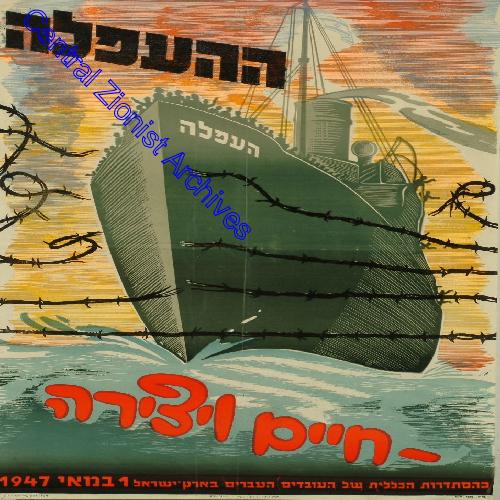
At the end of World War II, only about half of the Romanian Jewish population remained from before the beginning of the war. The survivors were traumatized after years of humiliation, forced labor in camps and denial of basic civil rights. The Communist regime was reluctant to compensate them for the damage caused to them during the war, anti-Semitism increased, and the new socio-economic situation also aroused great concern.
The survivors soon realized that they had no chance of integrating into the new Romanian reality, and the idea of immigration to the new Jewish State became paramount in Jewish society. As early as 1945, in a discussion of the situation of the Jews in Romania held at the Council of the National Democratic Front, the painter Max Hermann Maxi, a high-level Communist activist, was forced to admit that the Jews were mostly talking about emigration. Despite these changes, the number of departures of Jews from Romania during the years 1945-1949 was relatively small, approximately 37,000, of whom about 6,000 had no legal documents.
In 1947, approximately 20,000 Jews fled the country in a spontaneous operation named “the golden flee” and ships transporting illegal immigrants kept sailing from Romania up until 1948. The Constanța port also served as a departure port for Jewish refugees from eastern and central Europe, using two large size ships which had been acquired from the US: the Pan York and the Pan Crescent, whose names were changed to “Atzmaut” and “Kibbutz Galuyot” and sailed under the flag of Panama. In December 1947, these ships left Constanta port with more than 15,000 Jews from Romania - it was the first time in the history of emigration when such a large number of Jews went on a single trip.
The main obstacle to emigration from Romania before the establishment of the State of Israel was restrictions imposed by Britain, which did not grant certificates according to the prescribed quota. In August 1946, as part of its struggle against the Jewish paramilitary organizations, Britain decided to apply a policy of deterrence, designed to dissuade both the immigrants and the organizers of the illegal immigration, by which, any illegal immigrants captured, would be expelled.
As a result, many of those who wanted to immigrate were not allowed by the British to enter the country and were transferred on expulsion ships to transit camps in Cyprus. Despite this fact, the flow of ships bringing refugees to the shores of Mandatory Palestine continued, most of which were captured and expelled.
Oftentimes, acts of physical resistance to the arrest were displayed, immigrants tried to confront the British forces, which, in certain cases, led to the usage of live ammunition against them.
The British forces built twelve detention camps, in which some 53,000 immigrants from Eastern and Central Europe were held, including 23,000 from Romania.